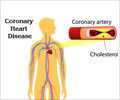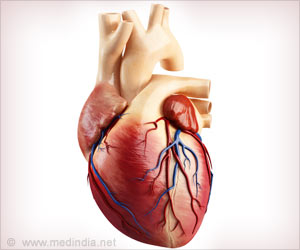The regional prevention project launched to prevent the incidence of coronary heart disease, has shown a 25 percent reduction in the number of acute heart attacks among a population of 10,000 adults.

Research, such as a 2007 study in the New England Journal of Medicine, has shown that preventive care is the number one factor responsible for reducing cardiovascular mortality in the United States over the past 20 years, explained Thomas Knickelbine, MD, cardiologist at the Minneapolis Heart Institute at Abbott Northwestern Hospital in Minneapolis. Knowing that preventive care is a critical component in reducing deaths from cardiovascular disease, which is consistently the number one killer in the U.S., was a major motivation behind the Heart of New Ulm Project, he said.
For the current analysis of the project, the researchers conducted a quality improvement analysis to quantify the absolute number of unique acute heart attack events (both incident and recurrent) over 10 quarterly periods between January 2008 and June 2010. The first five quarters represented the period before active interventions began and the last five quarters represented the period since active interventions began. The population included all the adult residents (approximately 10,000) of the 56073 zip code (i.e., New Ulm, Minn.). They recorded both fatal and non-fatal acute heart events via an electronic surveillance system.One unique aspect of this population is that more than 92 percent have their data in an electronic health record, which serves as a helpful surveillance database, Boucher said.
Through the electronic health records, the healthcare professionals were able to identify high-risk individuals for cardiovascular disease, such as those with pre-diabetes, diabetes, high body mass index or a family history, and recommend the appropriate exercise programs, nutrition plans and medical strategies. In addition to the 24 percent reduction in acute heart attacks, there were no fatal heart attack events in three of the last five quarters; but there were fatal acute heart attack events in each of the first five quarters. Total acute heart attacks were 62 in the pre-intervention quarters versus 47 in intervention quarters.
The community has played a large part in the ongoing project by embracing the project. In random telephone surveys, 94 percent of respondents reported they believe the Heart of New Ulm Project will be successful in achieving its mission to reduce heart attacks, explained Boucher. The community is engaged at every level, from schools to worksites to lay health leaders to the providers within the health care system which has been a huge contributor to the project success, she said.The first health screenings took place from April to November of 2009 and almost 5,200 people took part.
We are hoping to get at least 60 percent of the people who got screened in 2009 to do so again in 2011, said Charles Stephens, MD, local Medical Director for the project and family medicine physician at New Ulm Medical Center.We'd love to get all of the people aged 18-80, who live or work in the New Ulm area to come in during the six months of screening.For the betterment of our broader community, Allina as a health system understands that the care that we provide within the walls of our facilities and clinics is only a small portion of the way health can be perpetuated and improved, said the study's principal investigator Heather Britt, Manager, Center for Healthcare Innovation at Allina Hospitals & Clinics. We are attempting to build a sustainable and reproducible model of preventive cardiology, and this first set of results is only one step in proving the benefits of such population health efforts, Knickelbine said.
Advertisement














